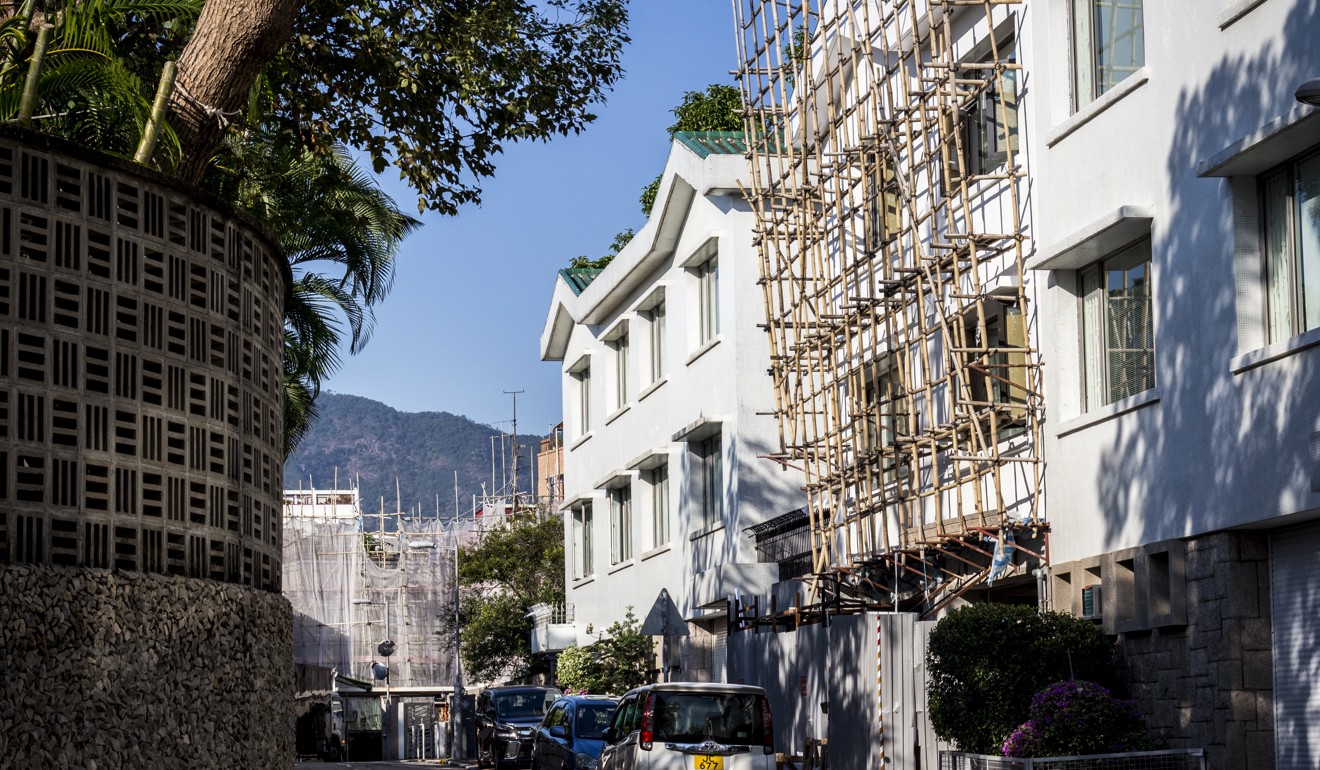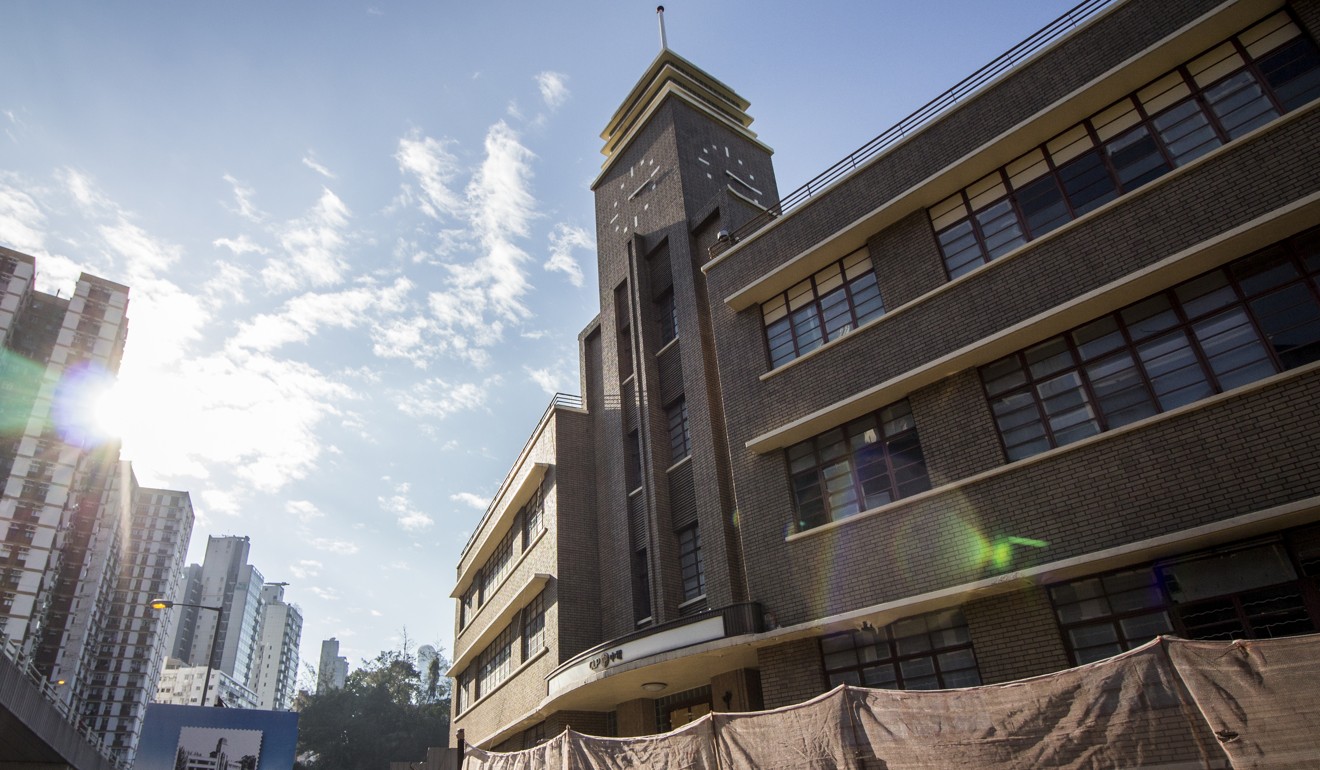
How one of Hong Kong's most powerful families built a suburban oasis in the heart of Kowloon
- Some of the city’s biggest movers and shakers live in the low-rise homes on leafy Kadoorie Hill, which they rent for up to US$41,000 a month
- A Kadoorie family-invested firm bought the land in 1930 as a hedge against a downturn in its main business, construction
As minibuses grind into low gear on Argyle Street, the scene just 100 metres uphill could not be more different. The streets are lined with bougainvillea, camphor trees and historic houses. When you stroll through the leafy avenues of Kadoorie Hill, it can be hard to imagine the crowds, traffic and stinky-tofu vendors of Mong Kok in Hong Kong’s urban heart are just a short walk away.
This unique combination of peace, quiet and convenience does not come cheap. Rents on the hill range from HK$50 to HK$80 per square foot (US$69 to US$110 per square metre), which puts the monthly bill for a typical 4,000-square-foot house at as much as HK$320,000. Unusually for such an exclusive neighbourhood, nearly all the properties are for rent; that’s because most of Kadoorie Hill is still owned by its namesake family, as it has been for nearly 100 years.
Luxury housing to love hotels: the unusual history of Kowloon Tong
Some of the area’s tenants have lasted nearly as long. They include 98-year-old Arnaldo de Oliveira Sales, the godfather of Hong Kong’s Olympic team and a stalwart of Hong Kong’s political establishment; he has lived in the same Kadoorie Hill house since it was built in 1953.
Another long-time resident was Shanghai-born textile magnate C.C. Lee, who moved into St. George’s Court when it was built in 1956.


“He is very famous as the father of Hong Kong’s textile industry,” says Nick Colfer, director of Kadoorie Estates. Although he was fabulously wealthy and eventually owned properties around the world, he lived in that flat until he died six years ago, says Colfer.
It is hard to say whether Macanese entrepreneur José Pedro Braga knew the district would have such staying power when he first envisioned it in 1930. Braga had just been appointed chairman of the Hong Kong Engineering & Construction Co., a civil engineering contractor that had been responsible for a number of public works such as dam construction. The Kadoorie family was a major investor and, when the company hit a rough patch, they recruited Braga to help save it.
“He was very much an enthusiast for the opportunities of Kowloon,” says Colfer. Braga saw the recent development of Kowloon Tong into an upper middle class garden suburb and thought its success could be replicated on the barren hillside just east of the Kowloon-Canton Railway’s Yaumati Station (today Mong Kok East Station on the MTR’s East Rail Line). The company bought most of the hill in 1931 for HK$326,000 – a bargain at the time, and around HK$33 million in today’s money. Two years later, workers set about terraforming it into a place to live.
By the middle of 1937, Kadoorie Avenue and Braga Circuit had been laid out and three single-family houses, a bungalow and six semi-detached houses had been completed. From the beginning, Braga decided the company should keep the land to itself.
“In this way the company will slowly and surely emerge from a piling company into a landowning company, and in that position we can look to its permanency in the future with confidence and security,” he wrote at the time.
Colfer suspects this had to do with the era’s economic climate. Japan had recently invaded China, throwing the country into instability, and the West was gripped by depression. Holding onto the land was Braga’s way of hedging the real estate bet he had made on behalf of the Kadoories.
By November 1941, 38 houses had been built, with rents ranging from HK$87 to HK$234 per month. “We have the original rent roll books,” says Colfer. The books indicate that rental payments stopped suddenly in December 1941 when the Japanese military invaded Hong Kong.
Why would you knock it down and build boxes that are exactly the same as the horrible boxes you get on the south side of Hong Kong Island nowadays?
“Normally any pre-war records would have been lost, burnt for firewood or destroyed during the war,” Colfer says. He believes that a loyal clerk must have saved and hidden the books, because the records resume in the same neat handwriting in 1945, just after the war ended.
As the Japanese marched into Kowloon, the Braga family raised a Portuguese flag in front of their house, hoping the occupying army would let them stay put because Portugal was a neutral power. They escaped the fate of Allied citizens, who were jailed in brutal internment camps, but they were still forced to abandon their home and flee to Macau. Japanese army commanders took up residence in the luxury properties.
After Allied forces regained Hong Kong in 1945, looters ransacked the hill until Sir Lawrence Kadoorie posted sentries at either end of Kadoorie Avenue to restrict access. The British military requisitioned some of the houses and used Japanese prisoners of war to tidy up the area.

Civilian tenants returned after 1946 and more houses were built, as well as St. George’s Court, whose 40 flats each span 3,000 square feet. One of the hill’s most distinctive properties is 20 Kadoorie Avenue, which was commissioned by Sir Lawrence Kadoorie for his mother and designed by architect Faitfone Wong. It features a circular foyer and curved staircase that gives it a distinctive, castle-like appearance.
“As with all the other houses in the estate, easy circulation from room to room was a key planning consideration,” notes architectural historian Eunice Seng.
The hill’s early post-war residents were mostly British expatriates, along with some local Portuguese and Chinese families; Rawitz, Clagne, Wong, Braga, Faber and Moodie are some of the names on the rent roll. It was also a popular place for companies such as HSBC, Wharf, Jardine, Dow Chemical, Gammon, British Overseas Airways and The Star Ferry to house their Kowloon-based executives. Later, it was a popular spot for entertainers.

“Some of the people living in Kadoorie Avenue are on top of the who's who list in the Canto-pop world, including performers such as Leslie Cheung and Andy Lau,” the Post reported in 2001.
Not only has Kadoorie Hill been an important source of revenue for the Kadoories over the years, it long served as the family’s base of power. Three generations of Kadoories lived on the hill, and Kadoorie-owned China Light and Power (CLP) built its headquarters just below the slope in 1940, with a landmark Art Deco clock tower looking over the junction of Argyle Street and Waterloo Road.
It is a distinctive building, but a surprisingly modest emblem for a family that owns landmarks such as The Peninsula hotel and The Peak Tram. The land on Kadoorie Hill alone is estimated to be worth HK$35 billion, according to Bloomberg, and Sir Michael Kadoorie’s net worth is HK$88 billion, making him the sixth richest man in Hong Kong.

The headquarters of CLP Power are now in Hung Hom, and a portion of the old headquarters was demolished in 2012 to make way for three 25-storey residential blocks. They will join the forest of towers that now overlook Kadoorie Hill, which stands out not only for its well-preserved historic architecture, but also its canopy of around 2,000 trees.
“It is remarkably tranquil for being in the centre of any city,” says Colfer.
He says the Kadoorie family sees the hill’s steady stream of rental income as a “long-term investment”.

The original land lease enshrines the area’s low-density nature, and the Town Planning Board blocked a request to increase the plot ratio in 2000, making it unprofitable to redevelop any of the hill’s houses.
“The Kadoorie family do not intend to sell their properties,” says Colfer. “Why would you knock it down and build boxes that are exactly the same as the horrible boxes you get on the south side of Hong Kong Island nowadays?”
How Kadoorie art deco homes got revamp for older tenants’ comfort
That means Kadoorie Hill will become even more exceptional as the years go by and nearby neighbourhoods continue to grow denser and taller. For Colfer, who lives on the hill himself, that is something to cherish.
“There’s nothing else like it in Hong Kong,” he says.
Editor’s note: The present value of HK$326,000 in 1931 is some HK$33 million, not HK$1.56 million as we originally reported. The story has been corrected.

